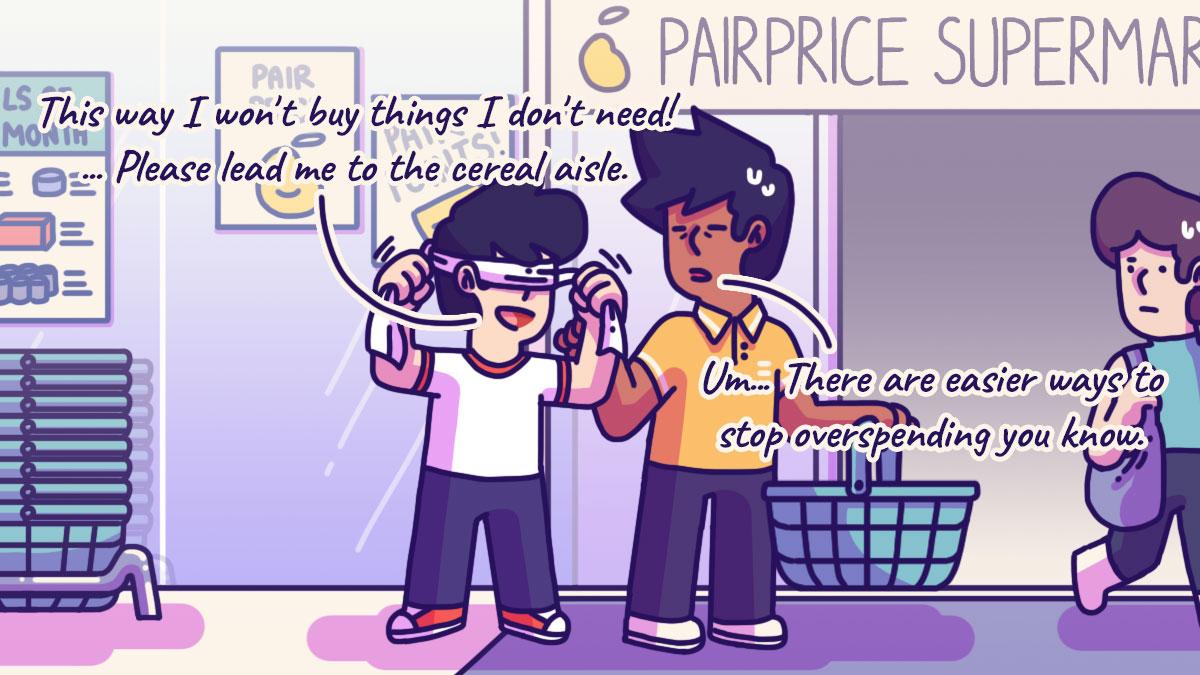Ever skimmed social media only to feel poorer and feel like your salary is not going anywhere?
What if the key to unlocking this problem is to create a healthy budgeting system for yourself so that you can take small steps in growing your cash stash for your wants.
Budgeting is a method to help you break free from the cycle of paycheck-to-paycheck living. It’s a tool that empowers you to understand where your money goes, allow you to be closer to your aspirations without going into debt, and plan for your future.
Here are a few budgeting methods to help you take charge of your finances, the trick is finding which one feels most natural and sustainable for you. We ranked them from basic to advanced.
1. Basic: The envelope system (aka cash stuffing)
Old-school but still effective, the envelope system is all about using physical cash to help you stay disciplined. The idea is to divide your spending into categories and allocate cash into separate envelopes for each one.
For example, groceries, entertainment, or transport. When the money in an envelope runs out, that’s your cue to stop spending in that category.
How it works:
Organize your monthly income and expenses.
Break down spending into clear categories.
Label each envelope with a category name.
Withdraw cash and put the budgeted amount into each envelope.
Use only the money in each envelope for its specific purpose.
This method makes your spending tangible and helps you stay within your limits. It's great for people who prefer visual or tactile systems.
However, it might not be suitable for bigger fixed expenses like rent or for those who mainly use digital payments. Choose categories where cash usage makes sense, think groceries or dining out, not Netflix subscriptions.
2. Basic: Cash-only budgeting
In a world full of digital transactions, cash-only budgeting offers a back-to-basics approach. The concept is simple: use only physical cash for your everyday spending. This makes every transaction feel more real, helping you curb impulse buying and stay within your budget.
How it works:
Plan your monthly spending by category (e.g., food, transport, entertainment).
Withdraw the total budgeted amount in cash and divide it based on those categories.
Spend only the cash allocated, once it’s gone, you stop spending in that area.
For those who prefer digital solutions, there’s also a digital cash-only version. You create a separate expense account, transfer your monthly budget into it, and only spend from that account using a debit card or e-wallet. It mimics the cash system but with digital convenience.
This method makes your spending feel more real, which can naturally reduce the urge to overspend. Watching your cash physically decrease gives a powerful psychological effect, making you more mindful and disciplined. It also keeps you out of credit card debt, since you’re only spending what you actually have.
While it might feel rigid at first, cash-only budgeting can be surprisingly freeing and combining it with the envelope system adds even more structure.
3. Intermediate: Pay yourself first
Want to build savings without overthinking it? Pay Yourself First turns the typical budgeting approach on its head. Instead of saving what’s left at the end of the month, you save first as soon as you get paid and spend what remains.
How it works:
Choose a set percentage or amount to save every month.
Automate a transfer to your savings or investment account on payday.
Use the remaining money for bills and spending.
This method encourages consistency and helps you treat savings like a non-negotiable commitment, just like rent or phone bills. It’s perfect for those who struggle to set money aside or feel tempted to overspend.
4. Intermediate: The 50/30/20 budget
Simple and balanced, the 50/30/20 method divides your after-tax income into three broad categories: 50% for needs, 30% for wants, and 20% for savings or debt repayment. This structure is perfect for those who want a flexible system that still provides solid financial boundaries.
How it works:
50% goes to essentials: rent, groceries, transport, utilities.
30% goes to discretionary spending: hobbies, entertainment, dining out.
20% goes to savings and debt payments.
It’s straightforward and easy to remember, which makes it ideal for budgeting beginners. That said, it may not suit everyone, especially if your fixed expenses are higher than 50% of your income. In that case, you can always tweak the percentages to reflect your reality better.
5. Advanced: Zero-based budgeting
If you want full control over every dollar you earn, zero-based budgeting could be your match. This method requires you to assign every dollar of your income to a specific purpose – whether that’s rent, bills, savings, debt, or even fun money – until your income minus expenses equals zero.
How it works:
Add up your total income from all sources.
List all your expenses, from the essentials to occasional treats.
Allocate your income to each expense until there’s nothing left over.
Adjust monthly as your income or expenses change.
It’s intense, yes, but powerful. This method forces you to be intentional and detail-oriented, helping you avoid aimless spending. It may take time to get used to, but the payoff is clarity and control.
Which one is best for you?
Whatever you choose, remember this: your budgeting method isn’t set in stone. As your life changes – income increases, goals shift, expenses grow – your budget should evolve too. Be patient with yourself, adjust when needed, and most importantly, stick with it.
Budgeting isn't just about dollars and cents. It’s about peace of mind, future dreams, and gaining back control. Choose the method that fits you best, and let it grow with you.
We made a book! What's Keeping You Broke? An Illustrated Guide to Financial Freedom shares tips on how to better manage your finances and steer your relationship with money in the right direction. Click to find out more:












